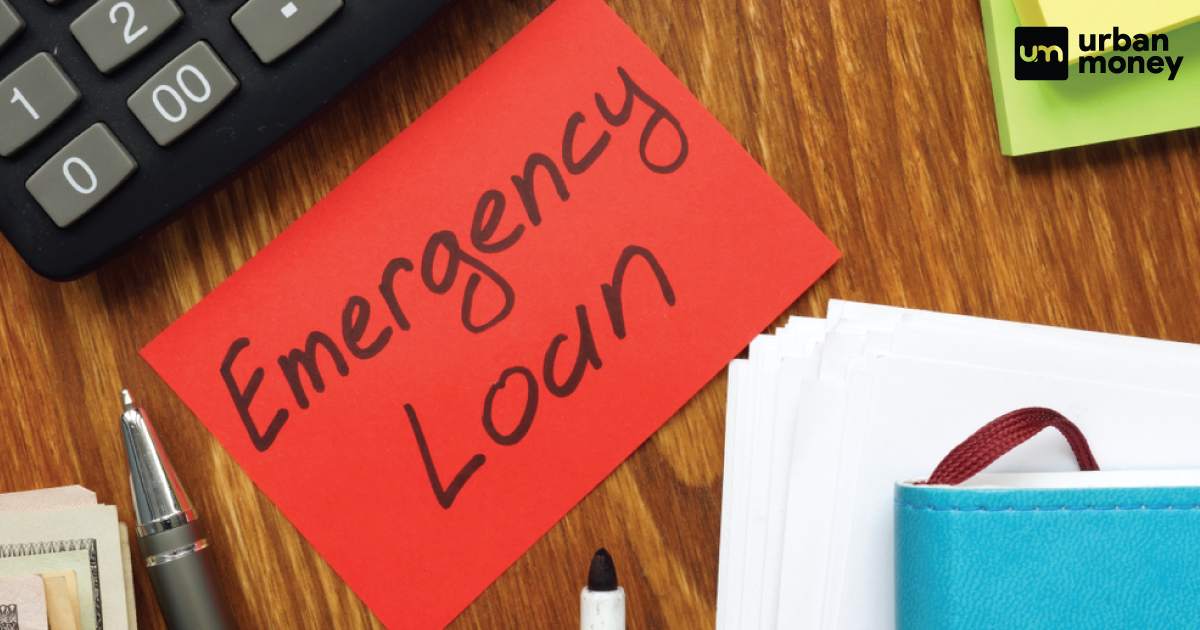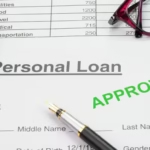Life is unpredictable. Unexpected expenses—such as medical emergencies, urgent home repairs, or sudden car breakdowns—can arise at any moment, often when you least expect them. When these financial emergencies hit, having access to quick cash can be a lifesaver. Emergency cash loans are designed to provide fast funds to cover unforeseen expenses, but with so many options and considerations, it can be challenging to find the right loan quickly and responsibly.
In 2025, the lending landscape has transformed significantly, with new technologies, regulations, and financial products designed to expedite access to emergency funds. This comprehensive guide will walk you through the process of obtaining an emergency cash loan quickly, what to consider, and how to avoid common pitfalls. We’ll also answer frequently asked questions to equip you with the knowledge needed to make the best decision when it matters most.
Key Takeaways
- Assess your financial need and repayment ability before borrowing.
- Explore various loan options including online lenders, credit unions, and payday alternatives.
- Use online pre-qualification tools to find the best offers without harming your credit.
- Prepare all required documentation to speed up approval.
- Understand all loan terms, fees, and repayment obligations before accepting.
- Plan a realistic repayment strategy to avoid debt traps.
- Be vigilant against scams and only borrow from reputable sources.
What Is an Emergency Cash Loan?

An emergency cash loan is a short-term loan designed to provide immediate funds to cover unexpected expenses. These loans are typically characterized by fast approval processes and rapid disbursement, allowing borrowers to access money often within hours or days.
Key Features of Emergency Cash Loans:
- Quick Approval: Streamlined applications with minimal documentation.
- Small to Moderate Loan Amounts: Usually range from a few hundred to a few thousand dollars.
- Short Repayment Terms: Typically due within weeks to months.
- Higher Interest Rates: Reflecting the quick turnaround and risk involved.
- Accessibility: Available to individuals with varying credit profiles, though rates and amounts depend on creditworthiness.
Why Might You Need an Emergency Cash Loan?
Emergencies can come in many forms:
- Medical Bills: Unplanned hospital stays, surgeries, or treatments.
- Car Repairs: Urgent fixes to ensure transportation.
- Home Repairs: Broken pipes, heating/cooling failures, or electrical issues.
- Unexpected Travel: Family emergencies requiring immediate travel.
- Loss of Income: Covering expenses during periods of unemployment or reduced work hours.
An emergency cash loan can bridge the financial gap during these tough times, helping you manage urgent needs without resorting to damaging credit card debt or depleting savings.
How to Quickly Get an Emergency Cash Loan in 2025
1. Assess Your Financial Situation
Before applying, understand exactly how much you need and your ability to repay the loan quickly.
- Calculate the amount needed: Avoid borrowing more than necessary to reduce interest costs.
- Evaluate your income and expenses: Make sure you can cover loan repayments without creating more financial strain.
2. Explore Loan Options Available in 2025
Advancements in fintech and lending options have expanded your choices.
- Online Personal Loans: Many online lenders offer rapid applications and funding within 24 hours.
- Credit Union Loans: Credit unions often provide low-cost emergency loans to members.
- Payday Alternative Loans (PALs): Offered by some credit unions as safer alternatives to payday loans.
- Installment Loans: Allow you to borrow larger sums and repay over a few months.
- Cash Advances: Some credit cards or employers offer cash advances, though often at high cost.
3. Check Eligibility Requirements
Each lender has its own criteria, but common requirements include:
- Proof of identity and residence.
- Proof of steady income or employment.
- Bank account information for fund disbursement.
- Minimum credit score (though some lenders are more flexible).
4. Gather Necessary Documentation
Speed up your application by having the following ready:
- Government-issued ID (driver’s license, passport).
- Proof of income (pay stubs, bank statements).
- Contact details and employment information.
- Any additional documents requested by the lender.
5. Use Online Pre-Qualification Tools
Many lenders offer pre-qualification with a soft credit check, which does not affect your credit score. This helps you:
- See loan offers and interest rates you qualify for.
- Avoid unnecessary credit inquiries.
- Save time by focusing on lenders most likely to approve you.
6. Apply Through Trusted and Reputable Lenders
Choose lenders with transparent terms, positive reviews, and clear fee disclosures. Avoid predatory lenders that:
- Charge exorbitant fees.
- Use aggressive collection tactics.
- Offer loan terms that are difficult to understand.
7. Review Loan Terms Carefully Before Accepting
Ensure you understand:
- Interest rates and fees.
- Repayment schedule.
- Prepayment penalties.
- Late payment consequences.
8. Plan for Repayment
Create a budget to repay the loan on time, avoiding rollover fees or default, which can damage your credit and finances.
Technologies Making Emergency Cash Loans Faster in 2025
The speed at which you can access emergency cash loans has improved dramatically over recent years, and this trend is expected to continue accelerating in 2025. This rapid evolution is largely driven by cutting-edge technologies that streamline loan application, approval, and disbursement processes. Understanding these technologies can help you navigate the lending landscape more effectively and get the funds you need faster.
1. Artificial Intelligence (AI) and Machine Learning
AI and machine learning algorithms play a central role in speeding up loan approvals by automating credit assessments:
- Instant Credit Risk Analysis: AI systems analyze vast amounts of data in seconds—such as credit history, income, spending habits, and employment status—to determine creditworthiness more accurately than traditional methods.
- Fraud Detection: Machine learning models can detect unusual patterns that may indicate fraud, protecting both lenders and borrowers.
- Personalized Loan Offers: AI tailors loan options and interest rates based on the borrower’s unique profile, making the process more efficient and borrower-friendly.
2. Digital Identity Verification
Gone are the days when verifying your identity meant submitting physical documents and waiting days for manual reviews. In 2025:
- Biometric Authentication: Technologies like facial recognition and fingerprint scanning enable instant identity verification.
- Document Verification Software: Optical character recognition (OCR) and AI-powered verification quickly validate documents such as driver’s licenses and passports.
- Remote KYC (Know Your Customer): Regulatory compliance is streamlined through automated digital KYC processes, allowing lenders to onboard customers remotely and quickly.
3. Open Banking and API Integrations
Open banking initiatives and APIs (Application Programming Interfaces) enable secure data sharing between banks, lenders, and third-party financial service providers:
- Real-Time Financial Data Access: With borrower consent, lenders can access real-time bank transaction data, verifying income, expenses, and account balances instantly.
- Faster Underwriting: This data integration allows for automated underwriting decisions based on actual cash flow rather than static credit reports.
- Improved Loan Customization: Lenders can offer more accurate loan amounts and repayment plans based on dynamic financial data.
4. Mobile Loan Applications and Digital Platforms
Smartphones and mobile apps have revolutionized the borrowing experience:
- On-the-Go Applications: Borrowers can apply for emergency cash loans anytime, anywhere, eliminating the need to visit physical branches.
- User-Friendly Interfaces: Simplified forms and guided application processes reduce errors and speed approvals.
- Instant Notifications: Real-time updates on application status keep borrowers informed and reduce anxiety.
5. Automated Underwriting Systems
Traditional underwriting involved manual review of credit reports and documents—a process that could take days. Now:
- Algorithms Evaluate Loan Eligibility: Automated systems quickly assess all required criteria against lender policies.
- Speed with Accuracy: Automation reduces human errors and biases, ensuring fairer and faster decisions.
- Scalability: Lenders can handle a larger volume of loan applications efficiently, improving access during times of high demand.
6. Blockchain Technology
Though still emerging in consumer lending, blockchain offers promising applications:
- Secure and Transparent Records: Blockchain can securely store loan contracts and repayment histories, reducing fraud and enhancing trust.
- Smart Contracts: Automated execution of loan terms (like automatic disbursement or repayment deductions) can streamline processes and reduce administrative delays.
- Decentralized Lending Platforms: Peer-to-peer lending platforms using blockchain can connect borrowers directly with investors, potentially lowering costs and approval times.
7. Instant Payment Networks
The actual delivery of funds has been sped up thanks to advancements in payment infrastructure:
- Real-Time Payments: Systems like the RTP® network, Faster Payments (UK), and UPI (India) enable lenders to transfer funds instantly to your bank account.
- 24/7 Availability: Unlike traditional banking hours, these payment systems operate around the clock, meaning you can get funds even on weekends or holidays.
- Integration with Digital Wallets: Some lenders now disburse funds directly to digital wallets or prepaid cards for immediate use.
How These Technologies Benefit Borrowers
- Speed: Loan applications that once took days are now processed within minutes or hours.
- Convenience: The entire process—from application to disbursement—can be completed remotely via mobile devices.
- Accessibility: Automated systems lower barriers for borrowers with non-traditional credit profiles.
- Transparency: Digital platforms provide clear terms and instant updates, reducing confusion.
- Security: Advanced verification and fraud detection protect personal data and financial transactions.
Risks to Be Aware of When Getting Emergency Cash Loans

While emergency cash loans can be a helpful financial tool in times of urgent need, they also come with several risks that borrowers must carefully consider. Understanding these risks can help you make informed decisions and avoid potential financial pitfalls.
1. High Interest Rates and Fees
One of the most significant risks associated with emergency cash loans is the typically high interest rates compared to other types of loans. Because emergency loans often involve quick approvals and unsecured lending, lenders compensate for the increased risk by charging higher interest.
- Annual Percentage Rates (APRs) for emergency loans can sometimes reach 30%, 50%, or even higher.
- Additional Fees: Many lenders add origination fees, processing fees, or service charges that increase the total cost of borrowing.
- Impact: If you are unable to repay the loan quickly, the interest can accumulate rapidly, resulting in much higher overall repayment amounts.
2. Short Repayment Periods
Emergency loans often require repayment within a short timeframe, sometimes as soon as your next paycheck. This compressed repayment schedule can create significant pressure:
- Financial Strain: You may struggle to make payments on time, especially if your income is tight or inconsistent.
- Debt Cycle Risk: Borrowers who cannot repay on time might take out another emergency loan to cover the first one, trapping themselves in a cycle of debt.
3. Potential Damage to Credit Score
Failing to repay your emergency loan on time can negatively impact your credit score. Some emergency loan lenders report to credit bureaus, and late or missed payments may:
- Lower your credit score.
- Make it harder to qualify for better loans in the future.
- Lead to collection actions and legal consequences.
4. Predatory Lending Practices
Unfortunately, some emergency loan providers engage in predatory lending, targeting vulnerable borrowers with deceptive practices:
- Hidden Fees and Terms: Some lenders bury exorbitant fees or harsh terms in fine print.
- Aggressive Debt Collection: They may use aggressive or harassing tactics to collect unpaid debts.
- Misleading Advertisements: Claims of “no fees” or “guaranteed approval” can be misleading.
- Unlicensed Lenders: Borrowing from unregulated or fraudulent lenders can lead to scams, identity theft, or unfair loan terms.
5. Risk of Over-Borrowing
In the urgency to get funds quickly, borrowers may be tempted to request more money than necessary or take multiple emergency loans simultaneously. This can result in:
- Higher debt loads that are difficult to manage.
- Increased monthly payments.
- Greater financial instability.
6. Lack of Financial Counseling or Support
Unlike traditional loans where lenders may offer advice or financial counseling, many emergency loan providers do not provide resources to help borrowers manage their finances or debt. Without guidance:
- Borrowers may not fully understand the long-term consequences.
- Repeated reliance on emergency loans can become a habit rather than a solution.
7. Impact on Future Borrowing Capacity
Using emergency cash loans frequently or defaulting on them can affect your ability to obtain traditional credit:
- Banks and credit unions may see you as a higher risk.
- You might be restricted to higher-cost lending options in the future.
- Long-term financial goals such as buying a home or starting a business could be delayed.
How to Mitigate These Risks
To minimize these risks, consider the following strategies:
- Borrow Only What You Need: Avoid taking on more debt than necessary.
- Choose Reputable Lenders: Research lenders thoroughly, check for licensing, and read reviews.
- Understand All Terms: Read the fine print carefully and ask questions if anything is unclear.
- Have a Repayment Plan: Budget carefully to ensure you can repay on time.
- Explore Alternatives: Consider borrowing from family/friends, negotiating payment plans, or seeking assistance programs before resorting to emergency loans.
- Seek Financial Counseling: Nonprofit organizations often provide free or low-cost advice to help manage debt.
Also Read :-How Can You Find The Best Low Interest Loan In 2025?
Conclusion
Emergency cash loans can provide a vital financial lifeline during urgent situations, but speed and responsibility must go hand in hand. In 2025, technological advances and diverse lending options make accessing emergency funds faster and easier than ever. However, it remains critical to thoroughly research lenders, understand loan terms, and plan repayment carefully to avoid escalating financial challenges.
By preparing in advance, knowing your options, and acting wisely, you can secure an emergency cash loan that meets your needs quickly while safeguarding your financial future.
FAQs
1. How fast can I get an emergency cash loan?
Many lenders can approve and disburse loans within 24 to 48 hours, some even within the same day.
2. Can I get an emergency cash loan with bad credit?
Yes, some lenders specialize in loans for borrowers with poor credit, but expect higher interest rates and smaller loan amounts.
3. What is the typical loan amount for emergency cash loans?
Amounts usually range from $500 to $5,000 depending on lender policies and borrower qualifications.
4. Are emergency cash loans the same as payday loans?
Not necessarily. Payday loans are short-term, high-cost loans due on your next payday, often with very high fees. Emergency cash loans can be more flexible and affordable.
5. What happens if I can’t repay my emergency loan on time?
Late payments may result in fees, higher interest, collection efforts, and damage to your credit score.
6. Are there alternatives to emergency cash loans?
Yes, options include borrowing from friends/family, negotiating payment plans with creditors, or using credit cards responsibly.
7. How can I avoid scams when looking for emergency loans?
Use licensed lenders, check reviews, avoid upfront fees, and never share sensitive info without verifying the lender’s legitimacy.


